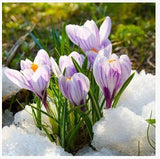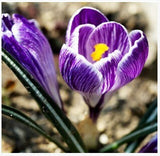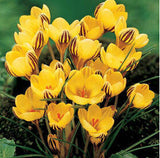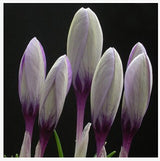20 Seeds Per Pack - Saffron Crocus Seeds
10 

Regular price
$11.99
$0.00
Sale
Days
Hours
Minutes
Seconds
Garden as you will live forever - William Kent
Original Price: $14.99 + Shipping Fee
Season Sale Price: $0.00
Welcome to The Secret Garden Shop! As part of our "A Year To Be Green" program, we are giving out stocks of our best selling seeds pack for FREE! Just pay the small international shipping fee. This is our way of encouraging people to start their own gardens right at their own homes!
Saffron is a delicious and colorful seasoning that is used in breads, desserts, and main dishes in many parts of the world, from England to India, from the Middle East to Scandinavia, and all around the Mediterranean. Without it, an Indian curry or a Spanish paella just wouldn't be the same.
The bright red-orange threads you get when you buy saffron are actually the stigmas, or female portion, of the Saffron Crocus flowers. It takes hundreds of flowers to produce a commercially useful amount, which explains why saffron is so expensive. For the home gardener, however, two dozen Saffron Crocus will supply enough of the precious spice in the first year for a few memorable dishes. Then, with each successive year, the corms (which look like bulbs) will multiply, the size of the planting will increase, and you'll be able to harvest more of the spicy stigmas. After 4 to 6 years, you should divide and replant the corms (do it right after the foliage has faded). Division prevents overcrowding, which can lead to a decrease in flowering.
Plant the corms 4in deep and 4in apart. If gophers, mice, or voles are a problem in your garden, plant the corms in containers or line the bed with hardware cloth or a similar wire mesh. Flowers generally come up 6-8 weeks after planting, although occasionally they wait until the 2nd fall to appear. Bloom lasts about 3 weeks. The grass-like leaves may emerge either with the flowers or soon after they appear. Sometimes they wait until the following spring. In either case, the leaves persist for 8-12 weeks, then wither and vanish, leaving no trace of the corms below until the flowers appear again in fall. It's not a bad idea to mark the area where you've planted your corms, so you don't inadvertently dig them up while planting something else.



























